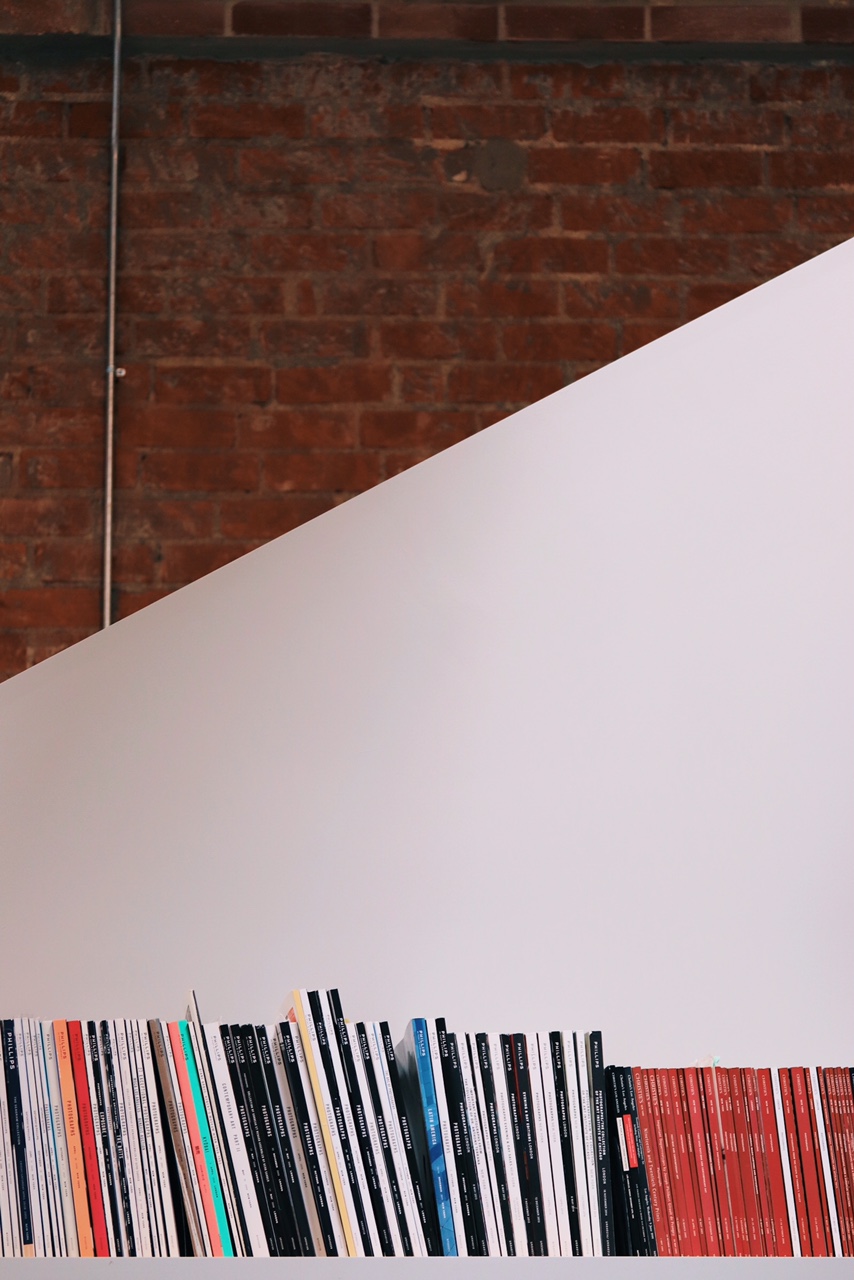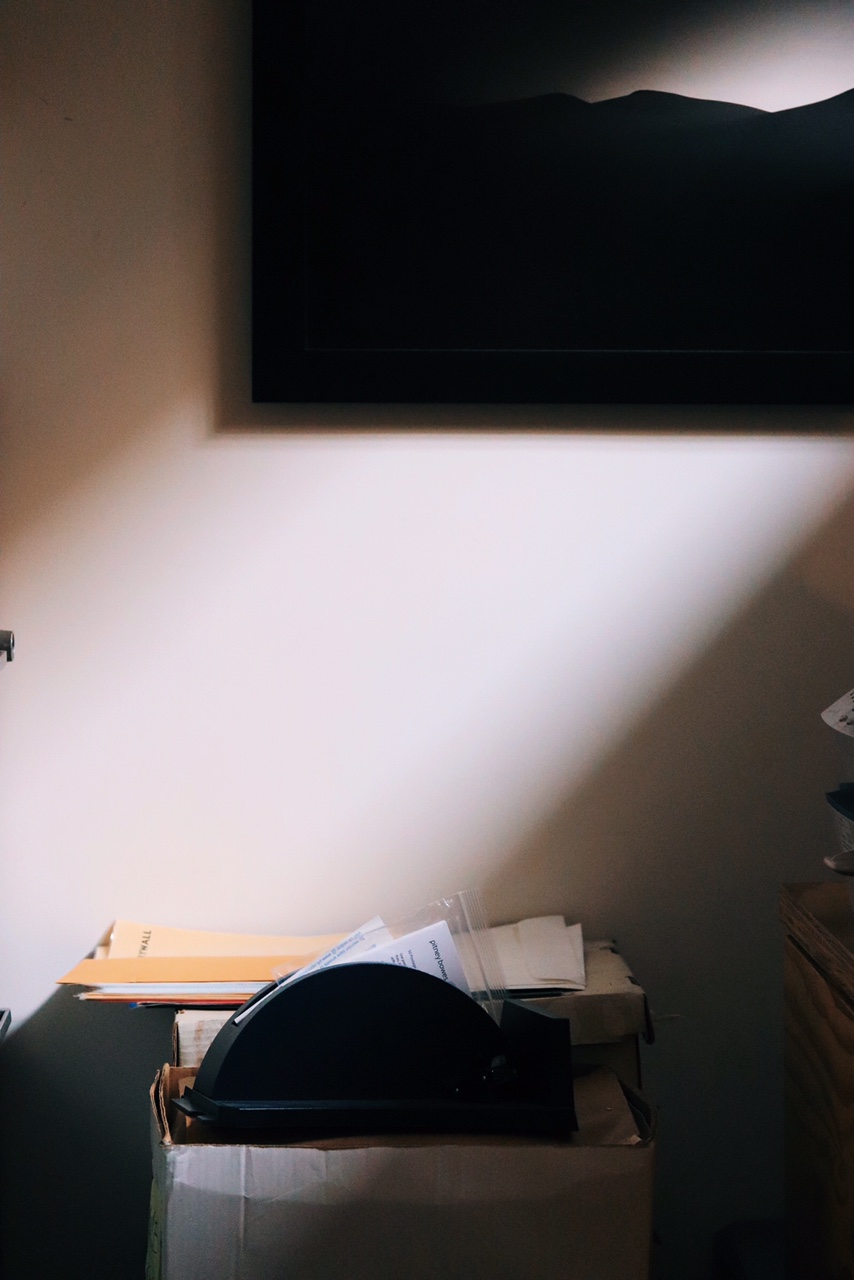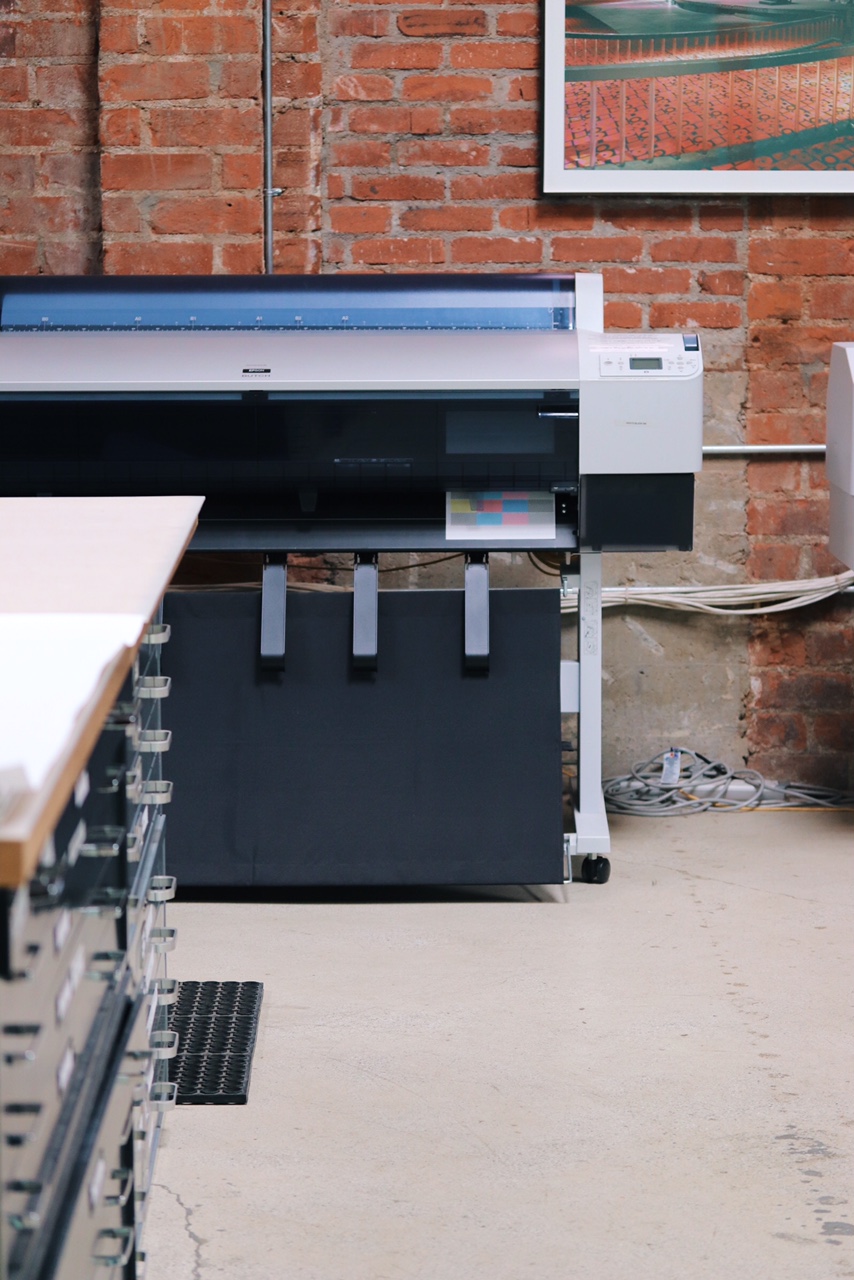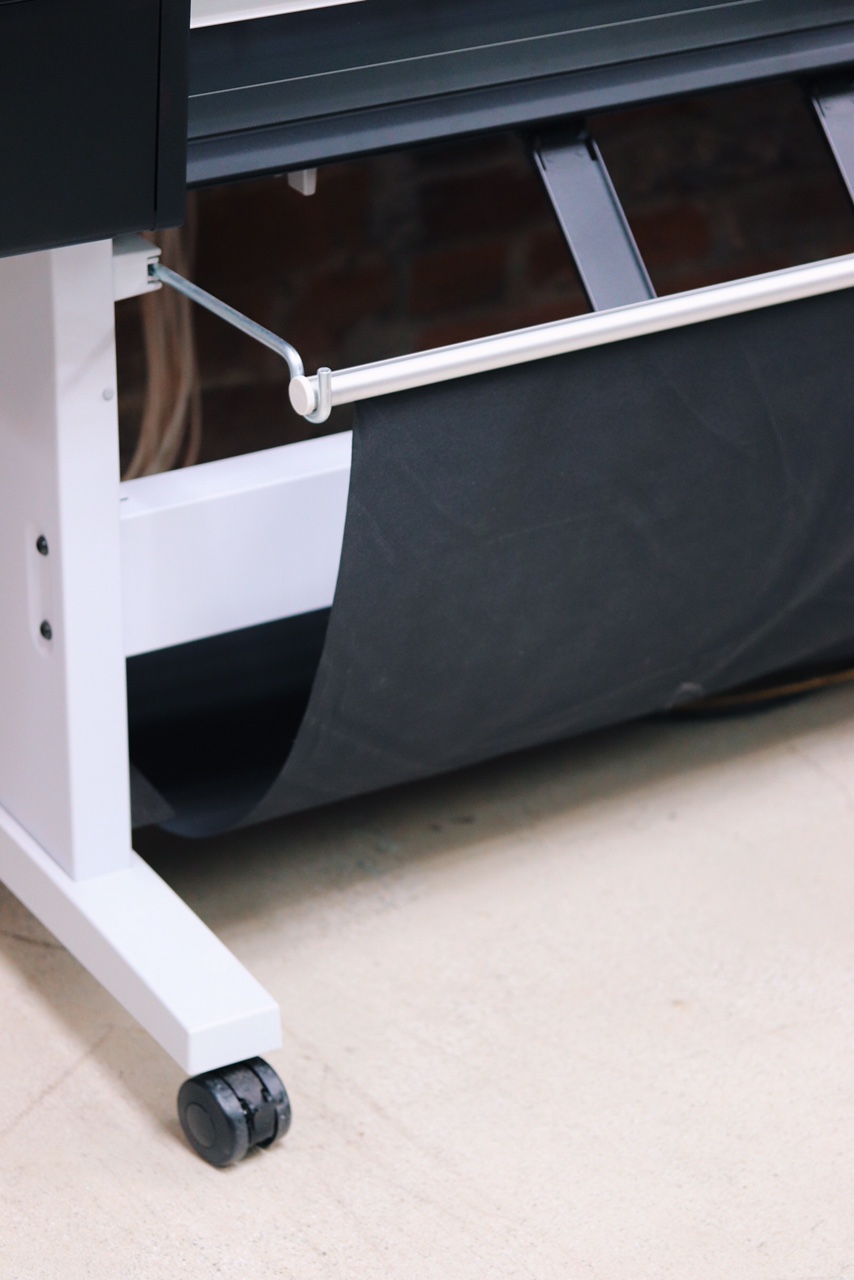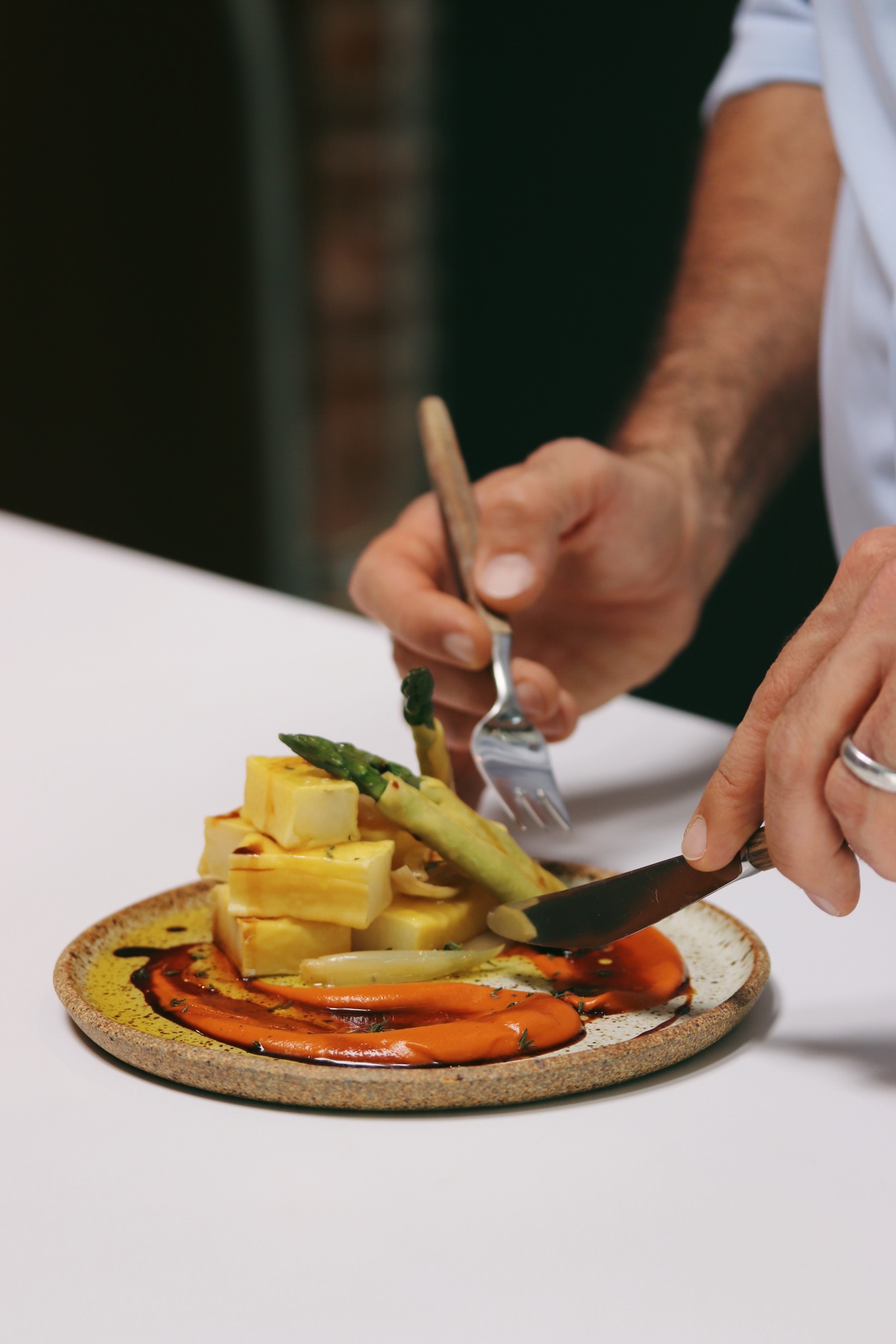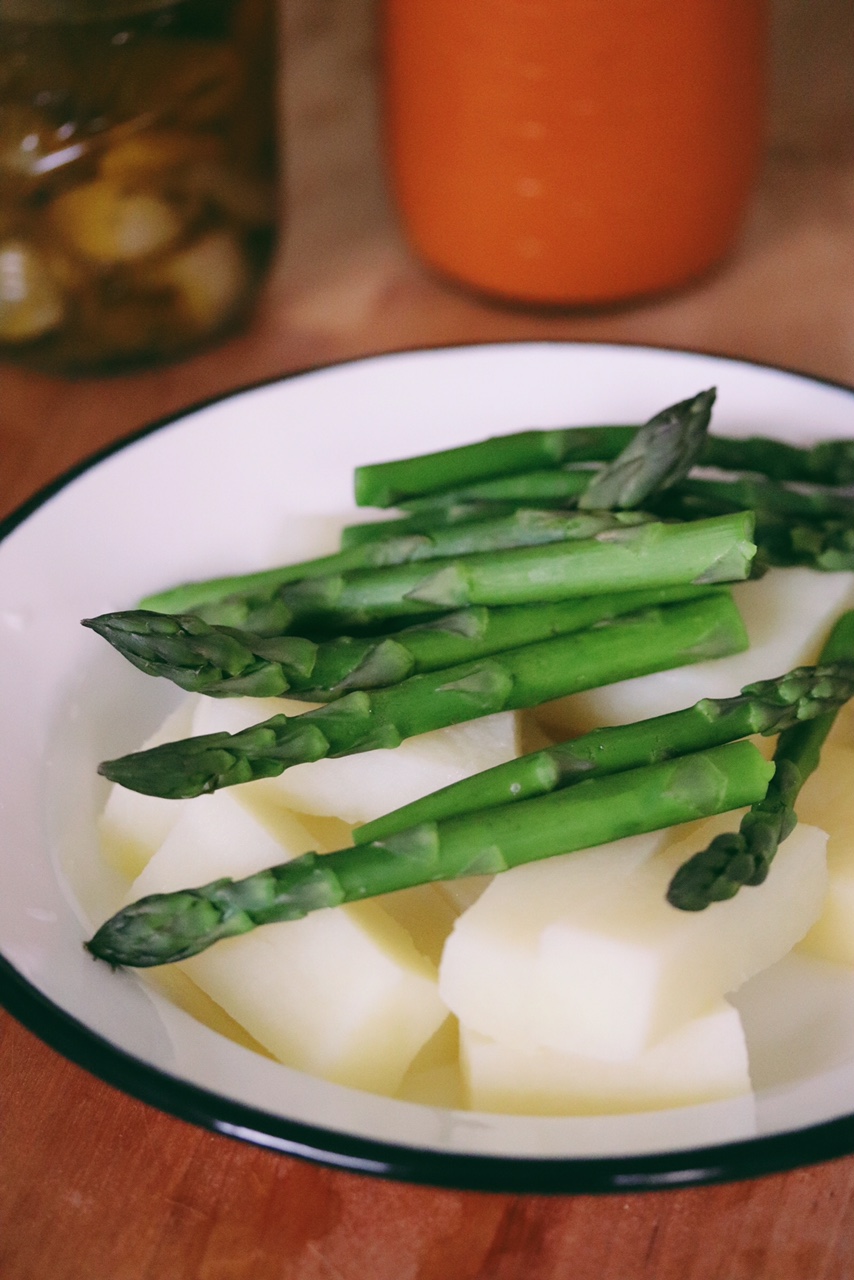The Lapis Press / Ajvar Pasta Salad
Inside the micro-neighborhood of Hayden Tract lies The Lapis Press. Part printing press, part art hub, Lapis works with contemporary artists by offering a range of services related widely to the creation of art. Lapis' repertoire goes far beyond the bounds of their impressive printers though, helping artists within a multitude of mediums and backgrounds create everything from large-scale art prints to unconventional sculptures, and beyond.
This dynamic and eclectic mix of works set against the backdrop of the famed architecture of the neighborhood makes The Lapis Press a beacon of inspiration, all coming from a team that is humble, approachable, and best of all, outwardly passionate about their work. While the Hayden Tract neighborhood is distinguished by the architecture of Eric Owen Moss, as Adam Gross, Director of The Lapis Press describes, beyond the initially striking nature of Moss' work, Hayden Tract is an ever-evolving neighborhood marked by industrial spaces and colors. Rust, concrete, steel and geometric silhouettes contrast with landscaped greenery and (often) blue skies.
It was these elements that inspired this dish created in honor of Lapis' work. In conceptualizing a recipe, I immediately thought of the classic pasta machine which like a printer, presses tender dough to reveal its own works of culinary art. Mimicking the strong structural aspects and colors of Lapis, its natural and industrial surroundings, and a recent show by Ruben Ochoa (Rust + You), this dish wraps homemade pasta sheets around vegetables resembling Lapis' environment, set on a plate with rust-colored ajvar, creating an edible replica of this artistic gem.
AJVAR PASTA SALAD
This recipe makes enough ajvar and pasta for ~4 servings
For the Ajvar
INGREDIENTS
3 – 4 (sweet) red peppers such as long or bell
2 small eggplants
1 clove garlic, crushed
1/4 c (60 ml) olive oil
1 tbsp (15 ml) apple cider vinegar
Salt and pepper to taste
INSTRUCTIONS
Blacken the peppers and eggplants: If you have a gas range you can turn the burner on and blacken the pepper and eggplant skins directly on the flame, using tongs. Otherwise, turn your oven to broil and on a baking sheet lined with foil, place the whole peppers and eggplants on the top rack under the broiler and let them turn black, rotating occasionally. Check the peppers every 8 – 10 minutes or so, turning them as needed to be sure all the skin gets charred. The eggplants may take a bit longer to char!
When you remove the pepper and (eventually) eggplants, put them in a bowl and cover with aluminum foil for ~5 – 10 minutes to steam and cool. When they are cool enough to handle, peel the skin off the peppers, discarding the skin and seeds, reserving the roasted pulp. Remove the smoked pulp of the eggplant and reserve, and discard the skin.
In a blender or food processor, add the pepper and eggplant, crushed garlic, olive oil, vinegar, and a dash of salt and pepper. Blend until smooth.
For the pasta
INGREDIENTS
4 eggs
1 c '00' flour, plus more for dusting
1 tbsp olive oil
Note: You need a classic pasta machine and rolling pin for this recipe. If you don't have a pasta machine you may end up with slightly thicker pasta and may need to cook it an extra minute or so.
INSTRUCTIONS
In a large bowl or on a clean rolling surface, add the flour. I usually make pasta dough on a surface but find that bowls can be helpful for kneading. Place a small bowl with ~1/2 c room temperature water next to the surface.
Place the flour in the center of the surface and make a wide well in the center but be sure to have some flour on the bottom. You don't want to see the table/bowl.
Separate 3 of the egg yolks in a small bowl. Place the 3 yolks and the remaining 1 egg in the well in the center of the flour. Add the olive oil and using a fork, start whisking the oil and eggs in the center of the dough. Once combined, incorporate the flour slowly from the inside of the well walls with the fork. Then switch to your hands to create the dough.
Bring the flour together into the wet ingredients and dip your hand in the water as needed to add moisture. You do not want to add too much water and if you splash it on the dough it will get sticky. By adding water on your hand a bit at a time you control dispersion of the water. Knead the dough for at least 8 minutes until smooth. Then wrap in plastic wrap and let sit at room temperature for at least 30 minutes, up to 2 hours.
Rolling the pasta: Set up your pasta maker. Use a knife to split the dough into 6 parts. Gently roll a piece piece into a ball and use a rolling pin to flatten slightly, just enough so that you can roll it through the machine. Go through the first setting 3 times, followed by the same for the next two. Then gently go through the 4th and 5th setting until the dough is thin and the pasta sheet is long. Repeat for all pieces of dough.
When you're done, go to Step 2 of the instructions below to assemble.
For the dish (per person)
INGREDIENTS
3 pieces asparagus
2 potatoes, preferably yukon gold
Good quality olive oil
Petimezi*
Fresh thyme
1 shallot**
*Petimezi is Greek molasses made from grapes however pomegranate or date molasses could work (noting date is much sweeter), or alternatively a thick balsamic reduction would be great.
**In this recipe as pictured I used some shallot confit that I had, however if you do not want to confit shallots you can caramelize some with olive oil.
INSTRUCTIONS
Prep the vegetables: cut the asparagus into ~3 inch pieces and blanch. Set aside. Wash and cut the potatoes into desired shapes (rectangular is best, just under 1 inch), cook in low boiling water until tender and set aside.
Take your pasta sheets and wrap the potatoes and asparagus, trimming as needed. Try to wrap tightly to avoid air bubbles. Cook in well-salted boiling water for ~2-3 minutes, just to cook the pasta. Keep an eye on them, and then delicately remove and place on parchment paper to cool. Set aside and assemble plate.
To assemble the plate, place a generous spoonful of the ajvar on the plate and spread with a spoon. Then place the cooked pasta-vegetables in desired structure as pictured, drizzling with confit/cooked shallots. Then add a circular drizzle of olive oil and petimezi. Sprinkle with thyme.
Learn more about The Lapis Press here.






